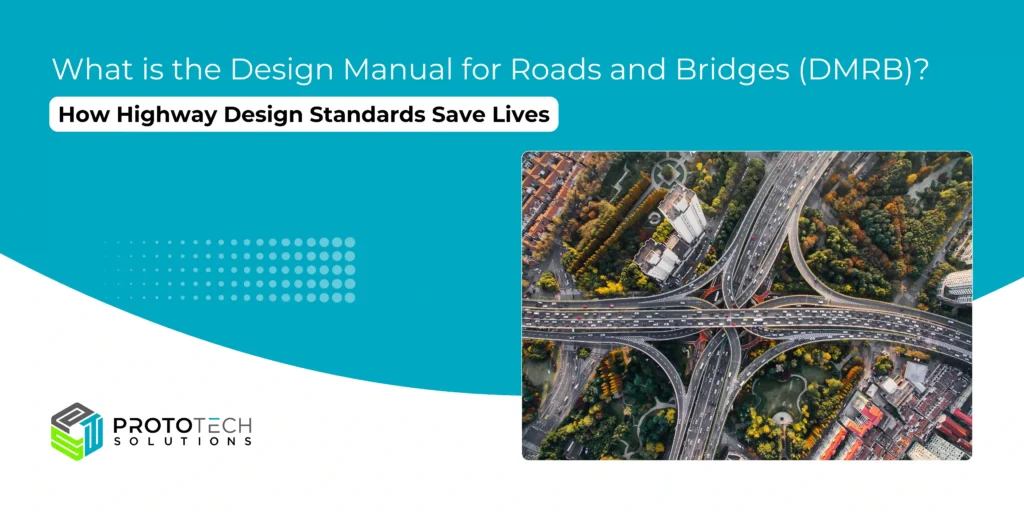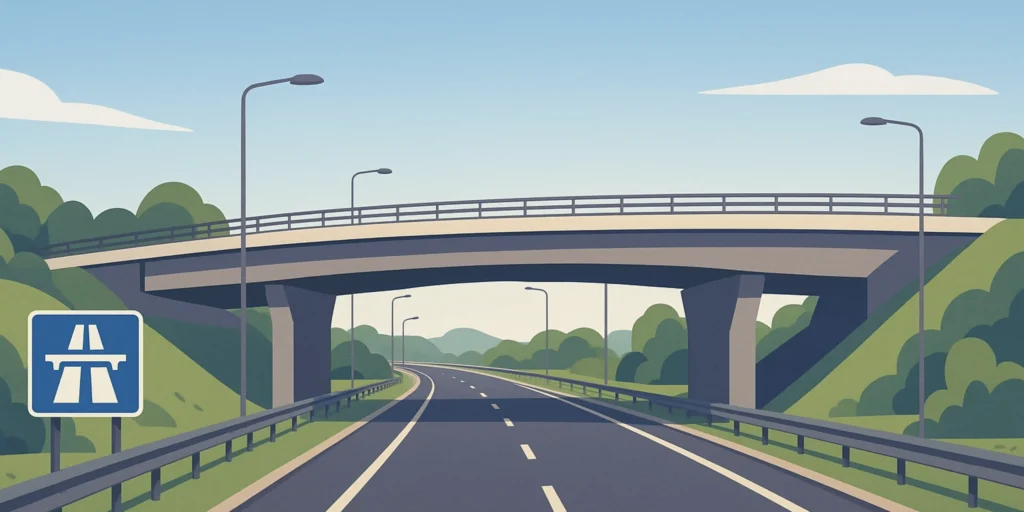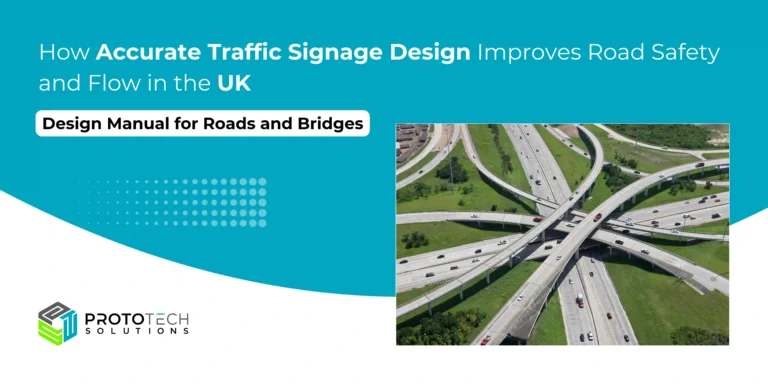What is the Design Manual for Roads and Bridges (DMRB)?

If you’ve ever driven on a motorway in the UK and thought, “This road just feels right,” there’s a good chance the Design Manual for Roads and Bridges (DMRB) contributed a big part to that experience. The DMRB is the UK’s official collection of standards, advice notes, and requirements for designing, assessing, and operating motorways and trunk roads. In short, it’s the go-to playbook for building safe, reliable, and future-ready highways and bridges.
Originally introduced in 1992, the DMRB was developed to bring consistency across highway designs managed by what is now National Highways (previously Highways England). It provides detailed technical guidance for engineers, designers, and planners working on everything from small junctions to massive infrastructure projects.
A Brief History
Before the DMRB was assembled, guidance for road and bridge projects came from several separate documents published by different government agencies. These were brought together into a unified, accessible manual, making it far easier for engineers and designers to ensure consistency and safety across the national road network. Over the years, the DMRB has been updated to reflect advancements in materials, construction techniques, and safety requirements.
Why Does the DMRB Matter?
Here’s why the DMRB is a cornerstone in highway engineering:
- Consistency: The DMRB ensures every major road and bridge in the UK is designed and built to the same high standards, regardless of who is delivering the project. This ensures safety, durability, and ease of maintenance across the entire network.
- Legal and Contractual Foundation: Many contracts for public highway works cite the DMRB, making its use a standard requirement for compliance in the industry.
- Innovation: Updates to the DMRB are regular and reflect advances in engineering, new research, and innovative construction and design methods. This encourages constant improvement in the UK’s roads and bridges.
- Global Influence: While mainly a UK standard, the DMRB is respected and used internationally, influencing transport infrastructure far beyond British shores.
What Does the DMRB Cover?
The DMRB is an extensive resource, organized into 15 volumes (though some have been withdrawn or merged over the years as standards have evolved). Each volume focuses on a particular area of road and bridge engineering, such as:
| Volume Number | Main Topic |
| 0 | General Principles & Scheme Governance |
| 1 | Highway Structures: Approval, Design |
| 2 | Substructures, Materials, Special Structures |
| 3 | Inspection and Maintenance |
| 4 | Geotechnics and Drainage |
| 5 | Assessment and Preparation of Road Schemes |
| 6 | Road Geometry |
| 7 | Pavement Design and Maintenance |
| 8 | Traffic Signs and Lighting |
| 9 | Traffic Control and Communications Technology |
| 10 | Environmental Design |
| 11 | Environmental Assessment |
| 12 | Traffic Appraisal of Road Schemes |
| 13 | Economic Assessment (Scotland) |
This means whatever your role: designer, contractor, planner, or client, there’s relevant, detailed guidance in the DMRB for your needs
Who Uses the DMRB?
The DMRB is designed for use by competent professionals: engineers, consultants, contractors, and transport planners who are responsible for projects on the UK’s strategic road network. Local authorities, private developers, and even practitioners in other countries often refer to the DMRB when working on schemes that must meet UK standards or when striving for internationally recognized best practice.
Key Benefits of the DMRB
- Enhanced Safety: The DMRB helps ensure roads and bridges are safe for everyone, from freight haulers to daily commuters and weekend cyclists.
- Value for Money: The standards promote durable and cost-effective infrastructure, which reduces the need for expensive repairs and upgrades down the line.
- Environmental Consideration: With dedicated sections on environmental design and assessment, the DMRB makes sure projects factor in their impact on nature and communities.
- Promoting Best Practice: Through continuous improvements and incorporating global research, the DMRB guides UK highways towards world-class status.
Continual Improvement
The DMRB isn’t static. National Highways and industry partners regularly update the standards to meet evolving challenges, whether that’s adapting to climate change, improving accessibility, or leveraging digital construction tools. Feedback from projects and practitioners helps refine the documents to keep them practical and future-proof.
For more information, please visit the official DMRB website. https://www.standardsforhighways.co.uk/dmrb
How CAD Drafting Services Support DMRB-Compliant Highway Design

CAD drafting services play a crucial role in complying with the DMRB requirements during highway design by providing precise, standardized, and efficient digital drawings that form the backbone of the design, documentation, and construction workflow.
Here’s a closer look at how CAD drafting services directly support DMRB-compliant highway design:
- Producing drawings with precise dimensions, scales, and annotations that conform to DMRB guidelines.
- Generate clear, professional-standard plans required for DMRB submissions, including layout, profile, cross-section, and detail sheets.
- Integration with Building Information Modelling (BIM) and digital engineering tools for visualizing and analyzing the design in 3D and 4D, helping ensure the project meets DMRB requirements not just on paper, but in the field as well.
- Laying the groundwork for automated processes, such as digital quantity takeoffs, clash detection, and visualization for stakeholder engagement.
- Faster and smoother design reviews due to a clear, standardized presentation that matches what highway agencies expect.
- Providing an unambiguous legal record, as CAD files form part of the contract and reference documentation.
- Producing “as-built” drawings, which are invaluable for maintenance and future upgrades.
Conclusion
The Design Manual for Roads and Bridges is more than just a technical reference—it’s the backbone of safe, efficient, and sustainable road design in the UK. By bringing together decades of knowledge, expertise, and research, the DMRB ensures our roads and bridges meet the highest standards today and into the future.
CAD drafting services play a crucial role in ensuring compliance with the Design Manual for Roads and Bridges (DMRB) in highway design. Utilizing professional CAD drafting is not just advisable; it is essential for delivering highway infrastructure that meets DMRB standards in today’s digital engineering environment.
Connect with our CAD drafting experts at ProtoTech Solutions to learn how we can help you in your road and highway design projects, ensuring adherence to local, national, and international standards.






